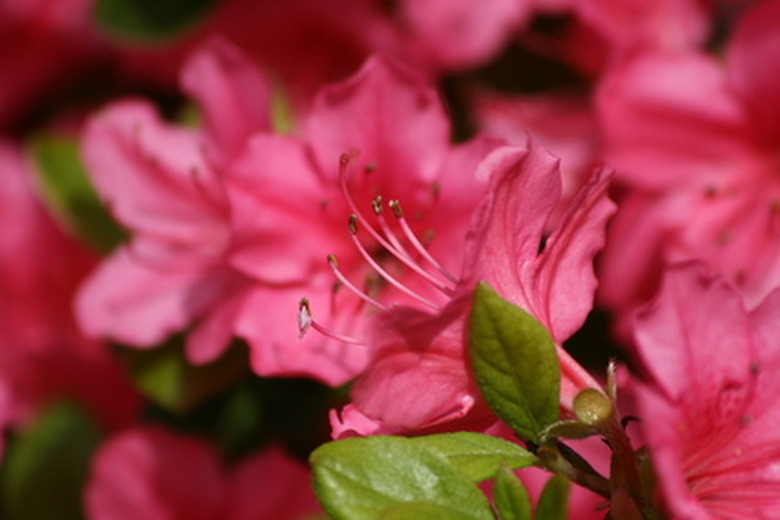Azalea Mildew Branch Diseases
Azaleas are hardy, drought resistant plants. This makes them very popular for landscaping and for use in yards. They require little maintenance and have been bred for years to be disease-free. However, just because azaleas seldom have health problems does not mean that they are completely free of problems. Azalea mildew branch diseases can manifest themselves in sneaky ways, making it hard to spot the signs of a problem until it is too late.
Types
Azalea branches can develop several types of mildew. Powdery mildew is common. Phytopthera is a mildew problem that manifests itself on the branches even though the real issue lies literally in the roots of the plant. Phomopsis and botryosphaeria are also serious diseases that impact the branches of azalea bushes.
- Azaleas are hardy, drought resistant plants.
- Phytopthera is a mildew problem that manifests itself on the branches even though the real issue lies literally in the roots of the plant.
Symptoms
If your azalea branches have a mildew disease problem, then you may find it easier to see these branches than usual. For example, often problems with branches lead to leaf and flower fall. You might notice that the branches are black or covered with a gray, black or white grainy or fluffy substance. They may also appear misshapen or even burnt in some cases.
Diagnosing the Problem
If your azalea branches are covered with a gray, white or black powder, then your culprit is powdery mildew. This may also cause the plants to lose leaves or flowers. Blackened, twisted branches can indicate azalea blight caused by phomopsis and botryosphaeria fungi. Finally, thin, rickety branches covered by only yellowing, small leaves tend to indicate root rot. While the branches themselves do not carry this problem, they are where you will likely notice symptoms.
- If your azalea branches have a mildew disease problem, then you may find it easier to see these branches than usual.
Treatments
Powdery mildew can usually be eradicated with a fungicide. Remove affected leaves and branches with sterile pruning shears that have been treated with rubbing alcohol. You should dispose of vegetation in a garbage bag rather than dropping it on the ground. This is also important in containing phomopsis and botryosphaeria fungi. If your azalea branches indicate the presence of root rot, then your plant is probably going to die. You can protect plants around it by removing the plant completely.
Prevention/Solution
The best way to prevent azalea mildew branch diseases is to be very careful when and how you water. You should water in the morning, and only if the leaves start to show that they are losing water by curling around the edges. Otherwise, let these drought-resistant bushes alone or you encourage an environment in which mildew can develop. Make sure that the soil around them is well drained, and if you have had problems with mildew before, apply a fungicide early in the growing season to prevent additional problems.
- Powdery mildew can usually be eradicated with a fungicide.
- You should water in the morning, and only if the leaves start to show that they are losing water by curling around the edges.
